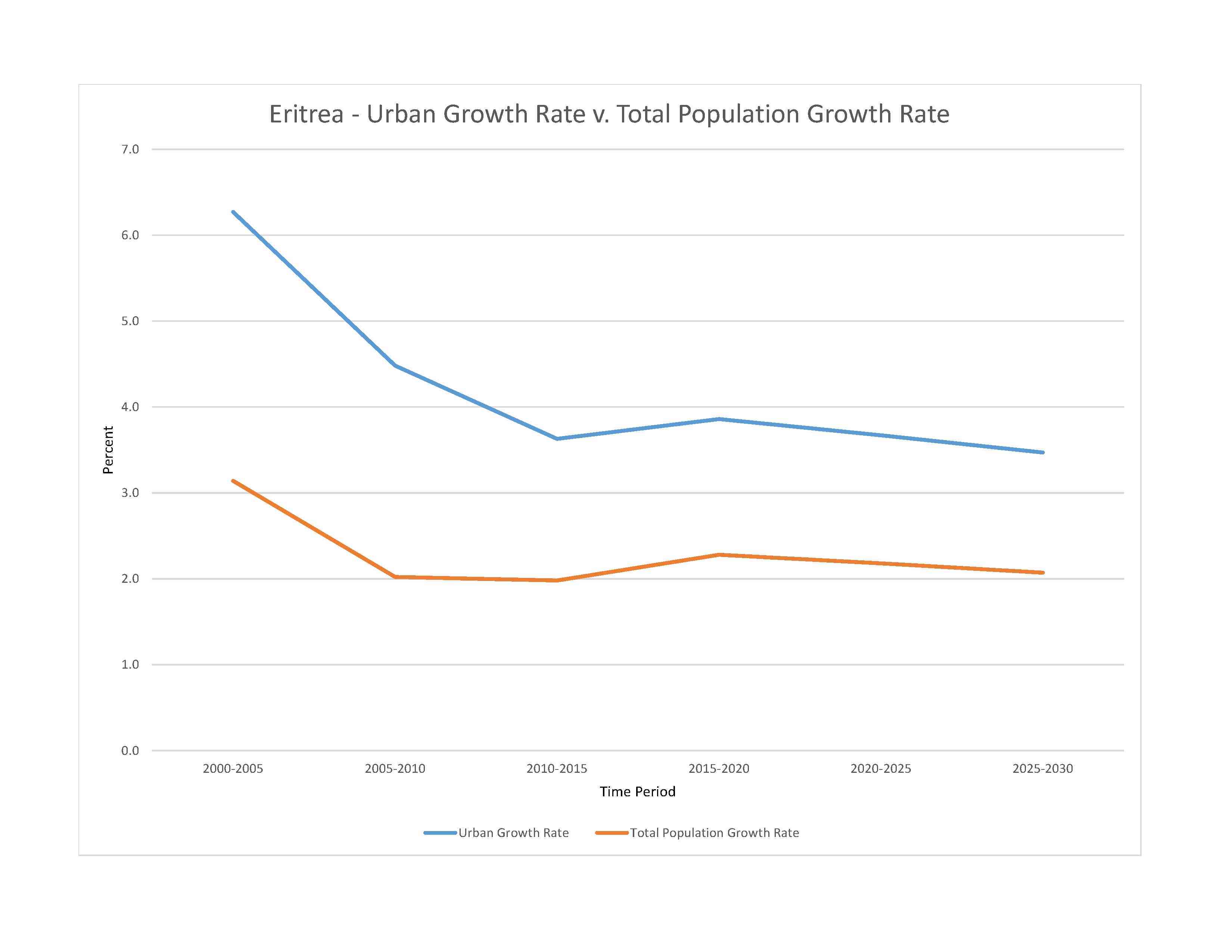
6,274,796 (2023 est.)
noun: Eritrean(s)
adjective: Eritrean
Tigrinya 50%, Tigre 30%, Saho 4%, Afar 4%, Kunama 4%, Bilen 3%, Hedareb/Beja 2%, Nara 2%, Rashaida 1% (2021 est.)
note: data represent Eritrea's nine recognized ethnic groups
Tigrinya (official), Arabic (official), English (official), Tigre, Kunama, Afar, other Cushitic languages
Eritrean Orthodox, Roman Catholic, Evangelical Lutheran, Sunni Muslim
Eritrea is a persistently poor country that has made progress in some socioeconomic categories but not in others. Education and human capital formation are national priorities for facilitating economic development and eradicating poverty. To this end, Eritrea has made great strides in improving adult literacy – doubling the literacy rate over the last 20 years – in large part because of its successful adult education programs. The overall literacy rate was estimated to be more than 75% in 2018; more work needs to be done to raise female literacy and school attendance among nomadic and rural communities. Subsistence farming fails to meet the needs of Eritrea’s growing population because of repeated droughts, dwindling arable land, overgrazing, soil erosion, and a shortage of farmers due to conscription and displacement. The government’s emphasis on spending on defense over agriculture and its lack of foreign exchange to import food also contribute to food insecurity.
Eritrea has been a leading refugee source country since at least the 1960s, when its 30-year war for independence from Ethiopia began. Since gaining independence in 1993, Eritreans have continued migrating to Sudan, Ethiopia, Yemen, Egypt, or Israel because of a lack of basic human rights or political freedom, educational and job opportunities, or to seek asylum because of militarization. Eritrea’s large diaspora has been a source of vital remittances, funding its war for independence and providing 30% of the country’s GDP annually since it became independent.
In the last few years, Eritreans have increasingly been trafficked and held hostage by Bedouins in the Sinai Desert, where they are victims of organ harvesting, rape, extortion, and torture. Some Eritrean trafficking victims are kidnapped after being smuggled to Sudan or Ethiopia, while others are kidnapped from within or around refugee camps or crossing Eritrea’s borders. Eritreans composed approximately 90% of the conservatively estimated 25,000-30,000 victims of Sinai trafficking from 2009-2013, according to a 2013 consultancy firm report.
0-14 years: 36.27% (male 1,145,134/female 1,130,829)
15-64 years: 59.73% (male 1,842,953/female 1,904,677)
65 years and over: 4% (2023 est.) (male 100,158/female 151,045)
total dependency ratio: 77.9
youth dependency ratio: 70.8
elderly dependency ratio: 7.1
potential support ratio: 14 (2021 est.)
total: 21 years (2023 est.)
male: 20.5 years
female: 21.5 years
1.08% (2023 est.)
26.7 births/1,000 population (2023 est.)
6.6 deaths/1,000 population (2023 est.)
-9.4 migrant(s)/1,000 population (2023 est.)
density is highest in the center of the country in and around the cities of Asmara (capital) and Keren; smaller settlements exist in the north and south as shown in this 
urban population: 43.3% of total population (2023)
rate of urbanization: 3.67% annual rate of change (2020-25 est.)

1.073 million ASMARA (capital) (2023)
at birth: 1.03 male(s)/female
0-14 years: 1.01 male(s)/female
15-64 years: 0.97 male(s)/female
65 years and over: 0.66 male(s)/female
total population: 0.97 male(s)/female (2023 est.)
21.3 years (2010 est.)
note: data represents median age at first birth among women 25-29
322 deaths/100,000 live births (2020 est.)
total: 40.6 deaths/1,000 live births (2023 est.)
male: 47.5 deaths/1,000 live births
female: 33.6 deaths/1,000 live births
total population: 67.2 years (2023 est.)
male: 64.6 years
female: 69.9 years
3.5 children born/woman (2023 est.)
1.73 (2023 est.)
N/A
improved: urban: 73.2% of population
rural: 53.3% of population
total: 57.8% of population
unimproved: urban: 26.8% of population
rural: 46.7% of population
total: 42.2% of population (2015 est.)
4.1% of GDP (2020)
0.08 physicians/1,000 population (2020)
0.7 beds/1,000 population (2011)
improved: urban: 44.5% of population
rural: 7.3% of population
total: 15.7% of population
unimproved: urban: 55.5% of population
rural: 92.7% of population
total: 84.3% of population (2017 est.)
degree of risk: high (2023)
food or waterborne diseases: bacterial diarrhea, hepatitis A, and typhoid fever
vectorborne diseases: malaria and dengue fever
5% (2016)
total: 0.93 liters of pure alcohol (2019 est.)
beer: 0.42 liters of pure alcohol (2019 est.)
wine: 0 liters of pure alcohol (2019 est.)
spirits: 0 liters of pure alcohol (2019 est.)
other alcohols: 0.51 liters of pure alcohol (2019 est.)
total: 7.5% (2020 est.)
male: 14.7% (2020 est.)
female: 0.2% (2020 est.)
N/A
52.3% (2023 est.)
N/A
definition: age 15 and over can read and write
total population: 76.6%
male: 84.4%
female: 68.9% (2018)
total: 8 years
male: 8 years
female: 7 years (2015)
NOTE: The information regarding Eritrea on this page is re-published from the 2024 World Fact Book of the United States Central Intelligence Agency and other sources. No claims are made regarding the accuracy of Eritrea 2024 information contained here. All suggestions for corrections of any errors about Eritrea 2024 should be addressed to the CIA or the source cited on each page.
This page was last modified 04 May 24, Copyright © 2024 ITA all rights reserved.